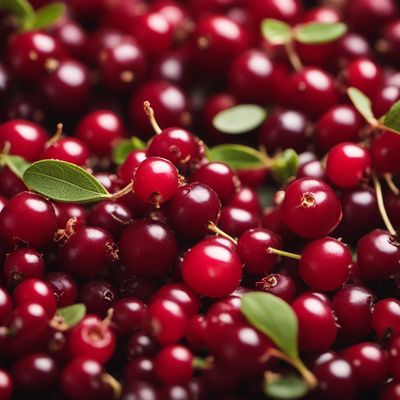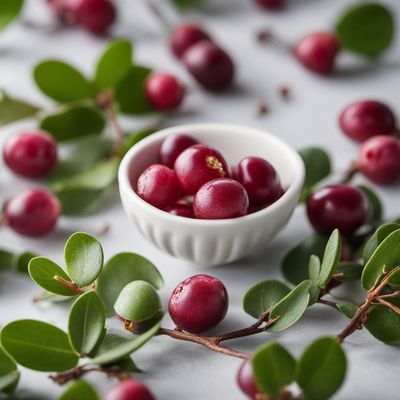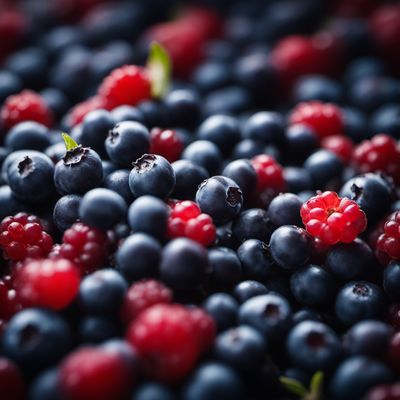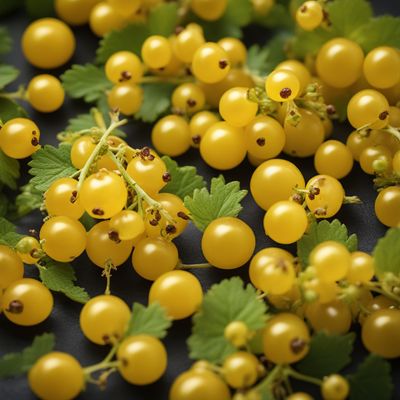
Ingredient
Sea buckthorns
The Tangy Treasure of the North
Sea buckthorns are small, round berries that have a bright orange color and a slightly wrinkled skin. The flesh of the berry is juicy and contains small seeds. The taste of sea buckthorns is tart and tangy, with a hint of sweetness. The texture is soft and pulpy, similar to a ripe berry. The berries are often harvested and processed into juice, oils, or other products for consumption.
Origins and history
Sea buckthorns have a long history of use in traditional medicine and culinary practices. They have been utilized for centuries in Europe and Asia for their medicinal properties and nutritional benefits. In recent years, sea buckthorns have gained popularity worldwide due to their high vitamin C content and potential health-promoting properties.
Nutritional information
Sea buckthorns are a nutritional powerhouse, rich in vitamins, minerals, and antioxidants. They are particularly known for their high vitamin C content, which is essential for immune function and overall health. The berries also contain vitamin E, vitamin A, potassium, and dietary fiber. Additionally, sea buckthorns are a good source of omega-7 fatty acids, which have been associated with various health benefits.
Allergens
Sea buckthorns may cause allergic reactions in individuals who are sensitive to berries or have a known allergy to sea buckthorns. Symptoms may include itching, swelling, or difficulty breathing. It is advisable to avoid consumption or use of sea buckthorns if you have a known allergy or consult with a healthcare professional for guidance.
How to select
When selecting sea buckthorns, look for berries that are plump and have a vibrant orange color. Avoid berries that are overly soft or have a dull appearance, as these may indicate overripeness or spoilage. The skin should be free from blemishes or mold. It is also helpful to taste a berry to ensure it has the desired tartness and sweetness.
Storage recommendations
To prolong the shelf life of sea buckthorns, store them in the refrigerator. Place the berries in a breathable container or perforated bag to allow air circulation and prevent moisture buildup. Proper storage can help maintain the freshness and quality of the berries for up to two weeks. It is important to note that sea buckthorns have a short shelf life and are best consumed as soon as possible after harvesting or purchasing.
How to produce
Sea buckthorn shrubs can be grown in suitable climates by amateur gardeners. They prefer well-draining soil and require full sun exposure for optimal growth and fruit production. Pruning and proper care are essential to maintain the health and productivity of the shrubs. It is recommended to consult local gardening resources or experts for specific guidance on growing sea buckthorns in your area.
Preparation tips
Sea buckthorns can be used in various culinary applications. The berries can be juiced to create a tangy and refreshing beverage. They can also be used to make jams, jellies, sauces, or syrups. Sea buckthorn oil is extracted from the berries and is used in skincare products or as a dietary supplement. The tart and tangy flavor of sea buckthorns pairs well with desserts, salads, marinades, and dressings. They can also be added to smoothies or used as a garnish for a burst of color and flavor.
Culinary uses
Sea buckthorns are commonly used in traditional cuisines of Europe and Asia. They are often incorporated into desserts, such as pies, tarts, or cakes, to add a tangy and vibrant element. Sea buckthorn juice is a popular beverage in some regions and is enjoyed on its own or mixed with other ingredients. The berries can also be used in savory dishes, including sauces, marinades, or vinaigrettes, to provide a unique flavor profile. Additionally, sea buckthorns are used in traditional medicine for their potential health benefits.
Availability
Sea buckthorns are native to Europe and Asia and are commonly found in countries such as Russia, China, India, Germany, and Finland. They are also cultivated in other regions with suitable climates, including North America. The berries are harvested and processed into various products, making them available in different forms worldwide.
More ingredients from this category » Browse all

Lingonberries and similar
The Tart and Tangy Delights: Exploring Lingonberries and Similar Berries

Juneberries
The Sweet Delight of Juneberries

Bearberries
The Wild Berry Wonder

Huckleberries
The Wild Delicacy: Unveiling the Enchanting World of Huckleberries

Haskaps
The Marvelous Haskaps

Myrtle berries
The Enchanting Berries of Myrtle

Bilberries (generic)
The Secret Superfood: Unveiling the Power of Bilberries

European barberries
Tangy Gems: Exploring the Delights of European Barberries

Jostaberries
The Tangy Delight: Unveiling the Secrets of Jostaberries

Worcesterberries
The Tangy Delight: Worcesterberries

Ugniberries
The Enigmatic Delight: Unveiling the Secrets of Ugniberries

Golden currant
The Fragrant Spice of Delight
